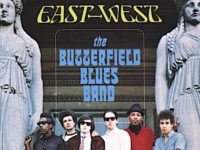1) Little Walter, “His Best”First gaining fame as a member of Muddy Waters band, Marksville, La.-native Little Walter pioneered the amplified harp sound that is often imitated but has not since been duplicated. Chess Records (now part of MCA) released a “Best” series that rank as one of the best compilation projects in the history of the blues. Walter’s set is no exception.
Includes the hits “My Babe”, “Boom, Boom, Out Goes The Lights”, “Last Night” and his signature blues instrumental, “Juke”.
2) Sonny Boy Williamson, “His Best”
Another Chess ‘Best Of’. Sonny Boy’s sound was closer to the Delta than Little Walter’s, but still right at home with the Chicago electric blues sound of the fifties and early sixties. His songwriting is underappreciated, too; Mose Allison (and later, the Who, I think) had better-known covers of “Eyesight To The Blind” and the Allman Brothers made “One Way Out” their own. but there’s nothing wrong with the way Sonny Boy did ’em.
His playing, singing and stage presence was entirely devoid of pretension and that’s exactly what you’ll get from this record.
3) Paul Butterfield Blues Band, “The Paul Butterfield Blues Band” and “East-West”
These two deserve to be lumped together because they are the only two Butterfields with Mike Bloomfield on guitar — Elvin Bishop plays rhythm — and afterwards, Butterfield begins to drift away from the straight electric blues toward a more R&B style. A white boy who grew up in Chicago’s South Side, Paul Butterfield soaked in everything that Muddy Waters, Howlin’ Wolf and Little Walter was puttin’ down during their peak years and then when he was ready to put together his own band, he lured away Muddy’s rhythm section and added Bloomfield and Bishop.
The result was stunning: a band that was thoroughly proficient in playing electric blues at the purest level, combined with the musicianship to combine rock and jazz styles without diluting the integrity of the blues. They were a rare small band in the mid-sixties that was more progessive than the Beatles at that time.
If you have to pick just one, go with “East-West”, which has a definitive version of the Nat Adderley classic “Work Song” and the revolutionary “East-West.” You remember how most rock and blues bands in the late sixties and early seventies played lengthy jams? That song started all that.
I could sing the praises of Howlin’ Wolf here, but I kind of consider him as more than just a harp player, and deserves his own post anyway. I will say that he has his own “His Best” record, too.
[amazon_enhanced asin=”B000002GZ3″ price=”All” background_color=”FFFFFF” link_color=”000000″ text_color=”0000FF” /] [amazon_enhanced asin=”B000005KQN” price=”All” background_color=”FFFFFF” link_color=”000000″ text_color=”0000FF” /] [amazon_enhanced asin=”B000002GZ1″ price=”All” background_color=”FFFFFF” link_color=”000000″ text_color=”0000FF” /]



Actually Butterfield lured Howlin’ Wolf’s rhythm section away (Sam Lay and Jerome Arnold). Lay played with Muddy later (and maybe earlier for all I know)but when Butterfield came calling they were with the Wolf. Great blog!
PS My source is Moanin’ At Midnight, The Howlin’ Wolf Bio. If that’s wrong then I’m wrong.
Thanks for the clarificaton, MF. I’m glad to know that about Butter’s rhythm section, I was way off on that one.
And thanks for the compliment on our blog! Come back and see us 🙂